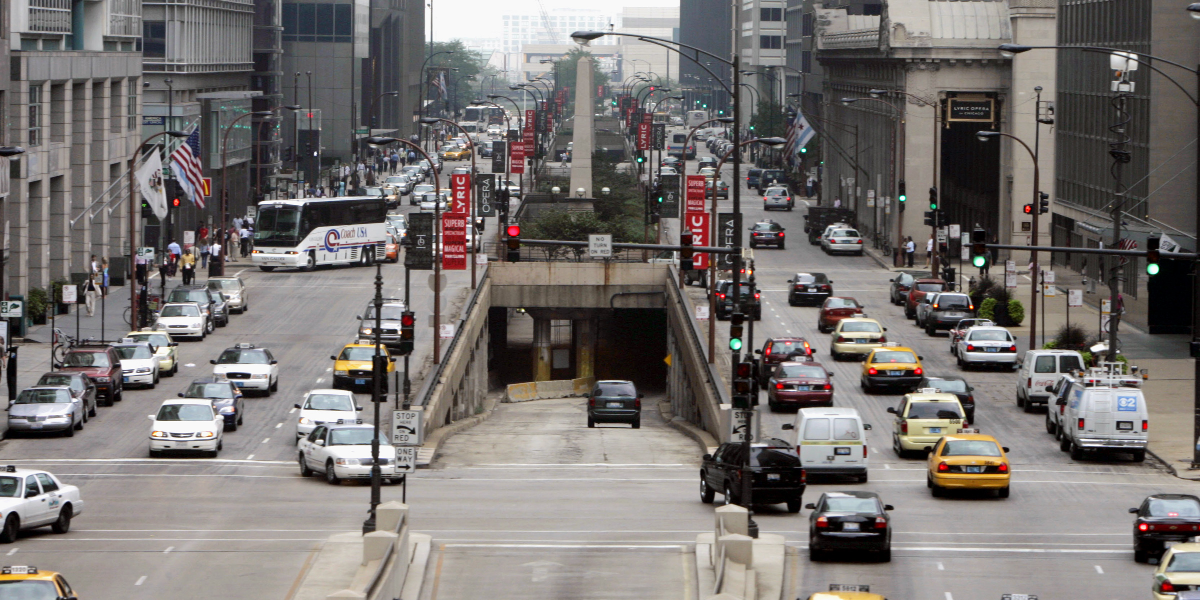Cities can improve the accessibility of rapid transit lines by using buses that travel above or below ground but ramp up/down to stations at ground level. This approach, “the Updown Bus,” could provide more reliable access than elevators, offer easier access than ramps, dramatically reduce construction costs, and improve general passenger flow, all while facilitating fast, effective transportation services.
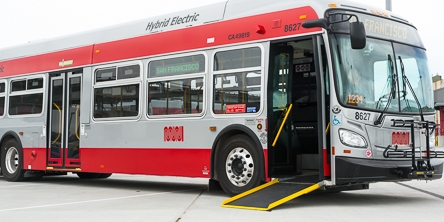
The Problem
Underground and elevated transit lines can provide fast service to a high volume of passengers because they are not slowed down by street traffic and intersections. However, this approach typically requires that people travel up or down to reach the platforms, which involves installing elevators and/or ramps in order to provide full access to people with disabilities. However, both options have their flaws. If they’re more than a few feet tall, ramps can pose a significant barrier for some users, and they also require a lot of space, which can be disruptive and costly to secure in dense city areas. Elevators are slow, they cannot carry a lot of people, and it is not uncommon for them to break down for hours at a time. Moreover, many station designs require two different sets of elevators: one set to the mezzanine and another to platform level, further slowing down access and exacerbating the risk of breakdowns.
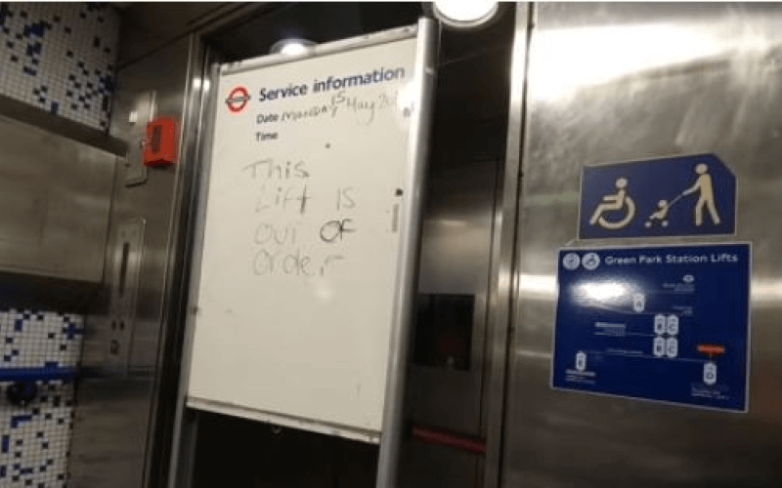
Even occasional elevator breakdowns can make using transit a gamble for people who need them. The London Underground reports elevator (lift) availability of 96.5 percent over the past 12 months. At this rate, someone commuting between two elevator-equipped stations will encounter an outage one and a half times a month. If the affected station has only one elevator to the mezzanine or platform, this person will have to find an entirely new way to get to work. Even once a month is too often for this to happen. It is crucial that accessibility systems are working as often as possible.
Ground level transit services such as buses and light rail are much easier to access for disabled people. All they require is a level platform or a wheelchair ramp. However, being at ground level means that these vehicles cannot travel nearly as fast as their elevated or subterranean counterparts; even if they have well-enforced exclusive lanes, they are slowed down by intersections and the need to travel slow enough to intermingle safely with other road users (pedestrians, cyclists, automobiles).
The Solution
I propose a hybrid design whereby buses travel on a grade-separated roadway but ramp up (or down) to street level to make stops before returning to the main route. This design marries the speed of grade-separated transit with the easily achieved accessibility of street-level service. Instead of having people go up or down to the bus, the bus would come to them. All other vehicles using the roadway would continue on above or below ground. The Updown Bus system would work like this:
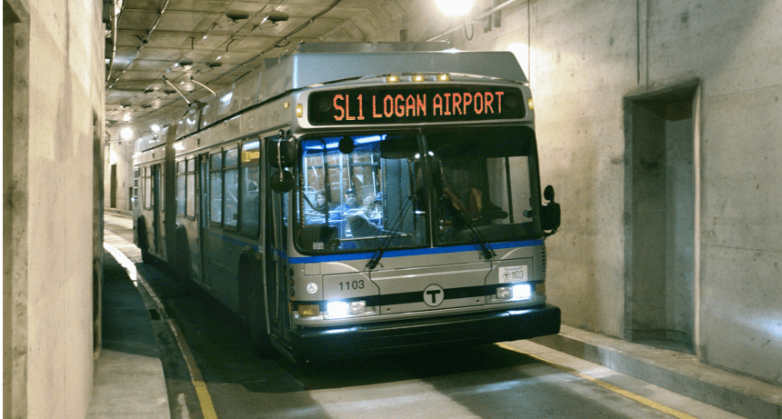
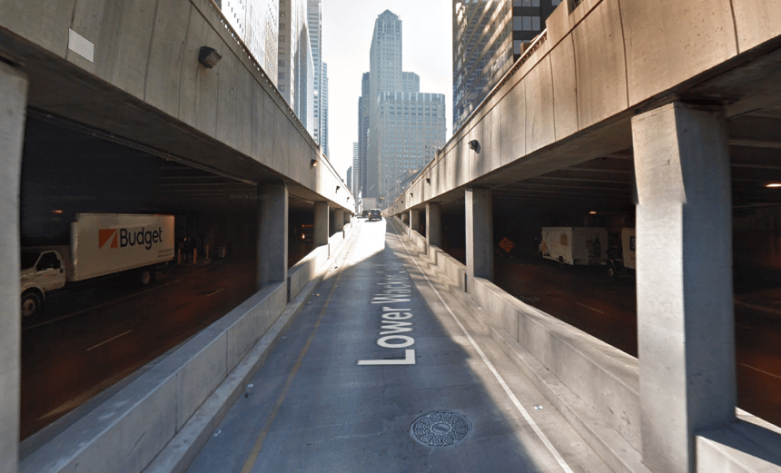
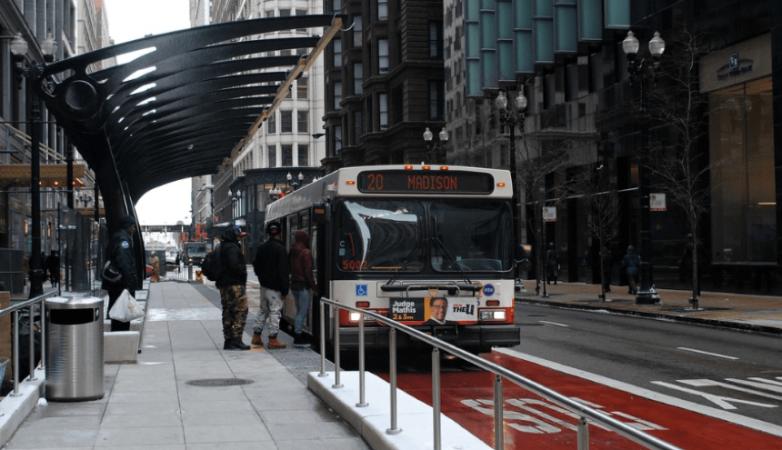
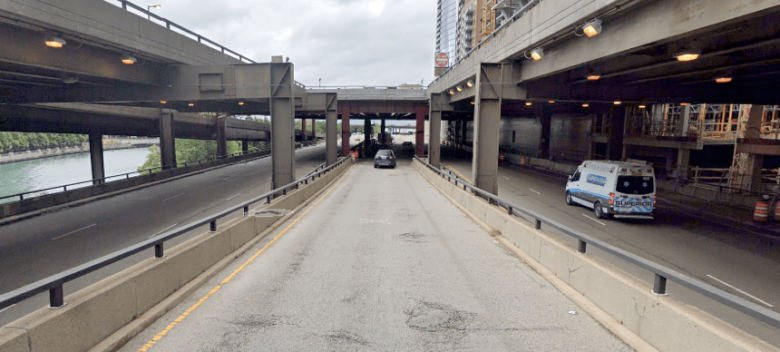

In addition to improving accessibility, this station design could improve passenger flow and lower construction costs, especially in the case of underground lines. The cost of elevators, escalators, stairs, and mezzanines can add up quickly, and on underground transit lines, all of these things must be dug out and then covered. This is particularly costly for stations in dense areas, where ridership might necessitate having a number of entry points and where relocating utilities and securing space for construction are acute challenges. The cost of building metro stations has been observed at 30% to 75% of the total construction cost. Building ramps to and from street level would also require some construction, but they’d take up far less space and be far simpler than an underground station, which requires things like emergency exits, fire safety systems, and fare control areas. Ground level stations would be quite simple to build and would allow people to exit simply by walking to either end of the platform and then crossing the street to reach the sidewalk.
Depending on how widely spaced cross streets are and the ridership at a given station, bus platforms might span across an intersection or two—busy stations might call for multiple buses to use the platform simultaneously. The transportation authority has a couple choices in these cases. If the affected cross-streets do not carry a lot of through traffic, it can build a continuous platform and turn each end of the streets into dead ends. Alternatively, it can split the platforms to allow cross traffic through, having some buses stop on either side.
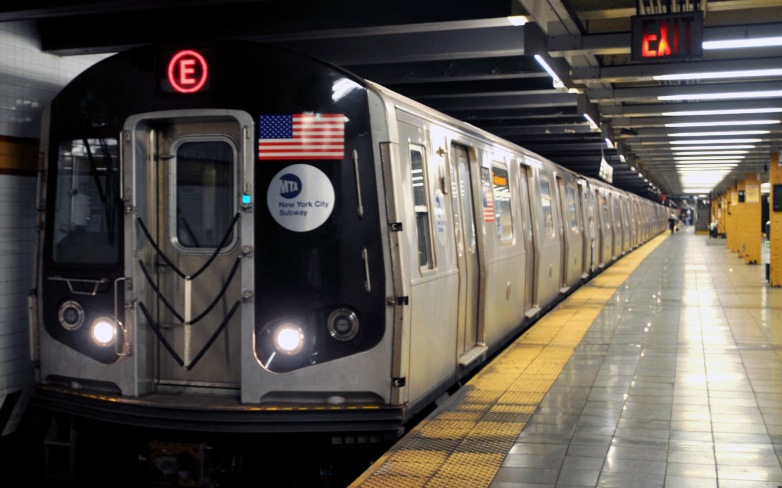
While the ground-level station design is possible for trains, it is much more practical for buses bus-based system. Buses are able to use much steeper ramps than trains because they are lighter and because rubber tires on pavement provide a much better grip than trains. A typical train ramping up 15 feet to street level would require ramps a minimum of 375 feet long, compared to 188 feet for buses. Thus, train ramps would be more expensive and much more likely to block off intersections. Also, heavy rail trains themselves might be long enough to block intersections; for instance, most NYC Subway trains are 480-600 feet long, while the average Manhattan street block is 264 feet. Moreover, in order to provide both express service and high frequencies, trains require an extra set of tracks along an entire route. Buses, on the other hand, only need extra lanes for the ramps and stations themselves; in between stations, all services can travel in the same lane, simplifying construction.
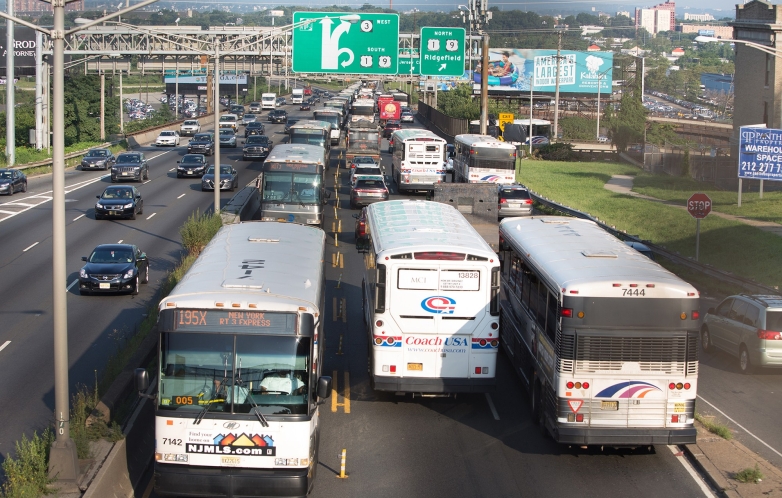
Moreover, buses can provide greater capacity, higher frequency, superior reliability, and faster journeys than trains. As I detail in this piece, the single most important factor to the performance of a transit service is the degree to which its right of way is protected. Heavy rail trains (subways and commuter lines) are so much faster than buses not because of their rails, but because there are no automobiles getting in their way. As Keanu Reeves can attest, here’s nothing to stop a bus from traveling at over 50 mph so long as there are not cars or other obstacles in its way. Run a series of buses one after another in a highway lane, as is done in New York/New Jersey’s Lincoln Tunnel Express Bus Lane, and they can carry as many or more people than trains on a track. This is because buses can travel much closer together than trains, which more than makes up for their smaller size.
Why This Matters
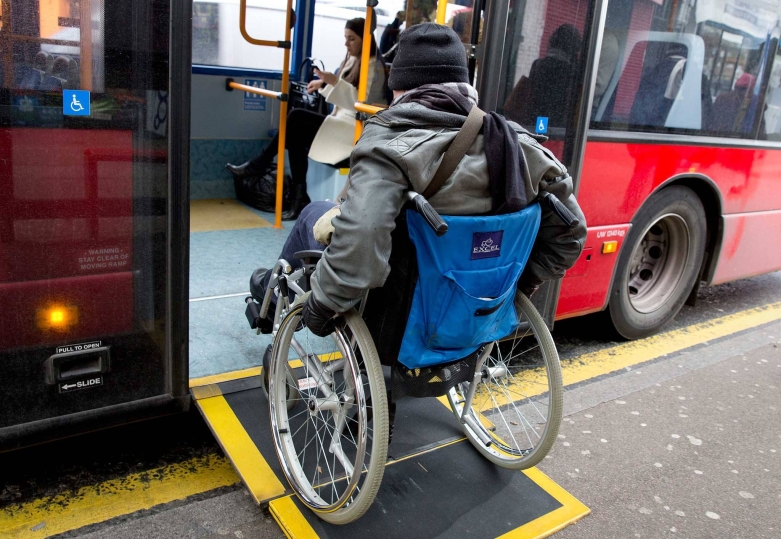 Accessibility is a challenge for many urban rail systems, particularly those where services run on elevated or underground tracks. Building elevators and pedestrian ramps for these transit stations can be complex and costly, and even once installed, neither approach is without its faults. Everyone deserves equal access to transportation services, and the Updown Bus approach, with its ground-level stations and fast service, moves us toward that goal. It’s also cheaper and simpler, demonstrating that better accessibility does not always mean higher costs. When considering new tunnels, transit agencies should consider whether this approach might work for at least some of their stations. Getting people up and down to transit is a challenge; in many cases, it may be easier to bring transit right to people.
Accessibility is a challenge for many urban rail systems, particularly those where services run on elevated or underground tracks. Building elevators and pedestrian ramps for these transit stations can be complex and costly, and even once installed, neither approach is without its faults. Everyone deserves equal access to transportation services, and the Updown Bus approach, with its ground-level stations and fast service, moves us toward that goal. It’s also cheaper and simpler, demonstrating that better accessibility does not always mean higher costs. When considering new tunnels, transit agencies should consider whether this approach might work for at least some of their stations. Getting people up and down to transit is a challenge; in many cases, it may be easier to bring transit right to people.
One Last Thing: Sources report that the buses are sleeping well tonight; after all, they are tired.
